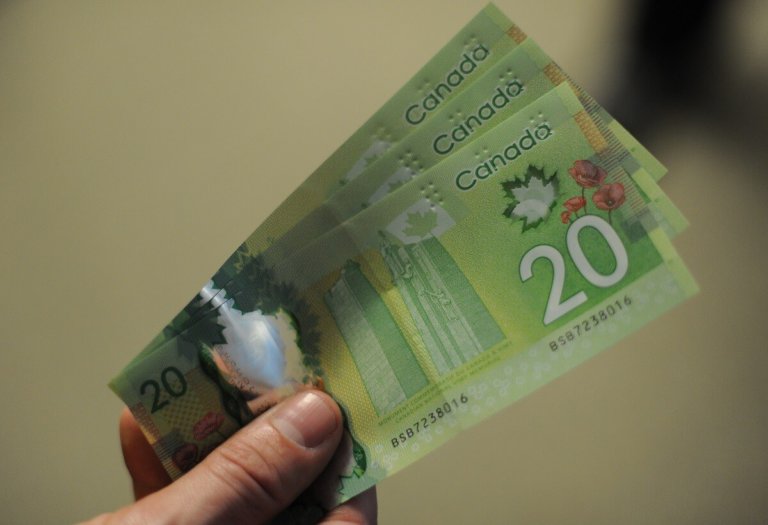
Over seven million Canadians have applied for the Canada Emergency Response Benefit (CERB) as of April 24, at which point CA$22.4 billion had been made out in CERB payments.
While international students are not covered under the CESB, those who have lost their source of income may qualify for the CERB.
The CERB payments are a lifeline for international students who have lost their jobs due to COVID-19, though concerns have been raised:
- Receiving CERB payments without applying?
- Should double payments be returned?
- How often must recipients reapply?
- Are CERB payments taxable?
- What happens to CERB payments if you get your job back?
Read on for clarification on CERB payments, particularly what to expect and how to go about it.
Receiving CERB payments without applying?
Michael Dalla Costa from Calgary received two CERB payments of CA$2,000 from “Federal Payment Canada” on April 21. But he has a full-time job and he never applied for the CERB.
He’s worried someone is using his Social Insurance Number (SIN), which is used in the application.
Several other similar cases have popped up across Canada, and the government is still trying to figure out how this happened. All we know for sure is these fluke payments must be flagged and returned.
Check out the official website to see how.

Mounted police officers ride down University Ave. through hospital row as Toronto first responders parade in front of the hospitals in Toronto, Ontario, Canada, in a salute to healthcare workers on April 19, 2020. Source: Cole Burston/AFP
Since the CERB, the Canadian government has announced two other major hardship schemes: the Canadian Emergency Student Benefit (CESB) and Canada Emergency Wage Subsidy (CEWS).
Together with the dual-tiered system in place for CERB payments, these have stirred some confusion among Canadian taxpayers on where they should be seeking aid.
Double payments must be returned
Those who had previously applied through both the Employment Insurance (EI) system and the Canada Revenue Agency (CRA) portal may receive double payments — a glitch reported by CBC Canada.
Employment and Social Development Canada acknowledges that those who mistakenly applied through both streams could receive double payments by accident.

A closed sign in the town of Niagara Falls is seen during the coronavirus pandemic on April 27 2020 in Niagara Falls, Canada. Tourist attractions across Canada have been hit hard by the COVID-19 pandemic. Source: Emma McIntyre/Getty Images/AFP
A spokesperson for the organisation said, “For example, millions of workers who applied for EI benefits were processed for the CERB and received a payment through Service Canada. If they were not aware that the payment was coming, they may have applied through CRA in error and thereby received a double payment – one from each organisation.”
You must reapply every four weeks
If you’re an international student, you would have likely applied for the CERB through the CRA. It’s important to note that your benefit expires every four weeks.
This means you must reapply for the next payment at the end of every month, with the necessary documents to prove you are still eligible.
However, if you are receiving CERB payments via the EI, you need only submit an updated eligibility report every two weeks.

The Jacques-Cartier bridge in Montreal illuminated in the colours of the rainbow as a sign of hope and in support of victims of the coronavirus. Quebec is Canada’s hardest hit province, with more than half of all cases and deaths linked to Covid-19. Source: Eric Thomas/AFP
Remember, CERB payments are taxable
While you would ordinarily have tax deducted before receiving your salary, this is not the case with CERB payments.
Financial expert Preet Banerjee told Global News Canada, “If you were making more money on the CERB than you were before, you probably don’t have to set aside very much money at all. But if you were a high-income earner, you lost your job and you think there’s a good possibility you’d be going back to work, you may have to set aside a fair amount of that CERB.”

Healthcare workers applaud and film with their phones as Toronto first responders parade down hospital row in Toronto, Ontario, Canada, in a salute to healthcare workers on April 19, 2020, amid the novel coronavirus pandemic. Source: Cole Burston/AFP
He recommends using a personal income tax calculator to forecast how much you’ll be making this year. Then, start setting aside a part of your CERB payments for tax.
What if I get my job back?
At the launch of CEWS last Monday, Prime Minister Justin Trudeau said that those who get their jobs back can no longer receive CERB payments. If they do, they may have to pay back those benefits.
The CEWS covers 75 percent of wage payments for employers. This is to strengthen the workforce and bolster the economy against recession.

Pedestrians are seen during morning commuting hours in the Financial District as Toronto copes with a shutdown due to the Coronavirus, on April 1, 2020 in Toronto, Canada. Source: Cole Burston/AFP
In the words of Minister of Employment, Workforce Development and Disability Inclusion Carla Qualtrough, “We really want employers to hire people back. We want people to switch back from the CERB to the wage subsidy.”
Worry not, though, as the CRA will reach out to every CEWS recipient who must return their CERB payments.
Liked this? Then you’ll love…
CESB vs CERB: What’s the difference and are international students in Canada eligible for both?
A guick guide to CERB for international students in Canada







